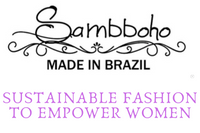Can My Dog Eat This? The Ultimate Guide to Human Foods Safe and Unsafe for Dogs

As dog parents, we see our furry companions as family members. They share our homes, adventures, and sometimes even our snacks. But here’s the truth: what’s healthy for you may be harmful, or even deadly for your pup.
Those puppy eyes make it tempting to sneak a bite from your plate, but dogs process food differently. Some human foods are safe in moderation, while others can cause stomach upset, organ damage, or worse. Knowing the difference is essential to keeping your dog safe.
At Sambboho, we specialize in handmade beaded dog collars crafted from full-grain leather. While we focus on accessories that keep your pet safe and stylish, from martingale collars to AirTag dog collars we know nutrition is just as critical for your dog’s well-being. That’s why we’ve created this in-depth guide: so you’ll know exactly which foods to share and which to avoid.
Veterinary Reminder
This guide is for general education and does not replace veterinary advice. Each dog has unique sensitivities, allergies, or medical conditions. Always check with your vet before introducing new foods, especially if your dog has digestive issues or chronic health problems. If your dog eats something toxic, call your vet or a pet poison control hotline immediately.
General Guidelines for Sharing Human Foods with Dogs
-
Moderation is key: Human food should never make up more than 10% of your dog’s diet.
-
Keep it plain: No salt, sugar, spices, or sauces.
-
Remove hazards: Seeds, pits, cores, and bones are choking or toxicity risks.
-
Cut into safe sizes: Small, bite-sized pieces prevent choking.
-
Introduce slowly: Try tiny amounts first to monitor reactions.
-
Avoid feeding from the table: Use a separate bowl or hand-feed as a special treat.
Foods Safe for Dogs (in moderation)
Fruits
-
Apples (remove core and seeds)
-
Bananas
-
Blueberries
-
Strawberries
-
Watermelon (no rind or seeds)
-
Mango (no pit/skin)
-
Pineapple (remove core/skin)
-
Pears (seedless, no core)
-
Pumpkin (plain, cooked)
Vegetables
-
Carrots
-
Green beans
-
Sweet potatoes (cooked, plain)
-
Cucumbers
-
Zucchini
-
Celery (cut small)
-
Broccoli (tiny amounts only, plain and cooked)
Proteins & Grains
-
Cooked chicken, beef, turkey (plain, boneless)
-
Cooked eggs (plain, no oil)
-
Cooked fish (boneless, plain)
-
Plain cooked rice or pasta
Other Safe Options
-
Peanut butter (xylitol-free)
-
Plain yogurt (unsweetened)
-
Cheese (very small amounts)
-
Air-popped popcorn (no salt, butter, or kernels)
-
Honey (tiny amounts only)
Foods Dangerous or Toxic for Dogs
-
Grapes & raisins
-
Chocolate (especially dark)
-
Xylitol (sugar substitute in gums and baked goods)
-
Onions, garlic, chives, leeks
-
Macadamia nuts
-
Alcohol, caffeine, coffee
-
Cooked bones (splinter risk)
-
Avocado (persin + pit hazard)
-
Cherry pits, apple seeds, peach pits (cyanide content + obstruction risk)
-
High-fat foods (pancreatitis risk)
-
Nutmeg, rhubarb, yeast dough
Common Questions About Human Foods and Dogs
Can dogs eat oranges?
Yes, in small amounts. Remove peel and seeds. High sugar and acidity mean only occasional treats.
Can dogs have cinnamon?
Yes, a light sprinkle is safe, but avoid baked goods with sugar, nutmeg, or xylitol.
Can dogs eat shrimp?
Yes, fully cooked, peeled, and plain. Never raw or seasoned.
Can dogs eat avocado?
No. Persin + pit hazard. Best to avoid entirely.
Can dogs eat tomatoes?
Ripe red tomatoes are safe in moderation. Avoid stems, leaves, and unripe fruit (solanine toxicity).
Can dogs eat grapes?
Absolutely not. Grapes and raisins can cause kidney failure.
Can dogs eat cheese?
Yes, in tiny amounts. Choose low-fat varieties like mozzarella. Many dogs are lactose intolerant.
Safety Tips When Sharing Food
-
Stick to the 10% rule for human food.
-
Always wash fruits and veggies.
-
Introduce new foods slowly.
-
Watch for signs of allergies or upset stomach.
-
Store toxic foods safely out of reach.
What to Do If Your Dog Eats Something Toxic
-
Stay calm.
-
Identify what was eaten, how much, and when.
-
Call your veterinarian or a 24/7 pet poison helpline immediately.
-
Never induce vomiting unless instructed by a professional.
Having your dog wear a durable personalized collar with ID details ensures peace of mind in emergencies.
Sharing Safely Strengthens Your Bond
Sharing snacks is one way we bond with our dogs, but knowledge is power. By understanding what’s safe, you can enjoy giving your dog the occasional treat while protecting their health.
Always prioritize a balanced diet with high-quality dog food, and use safe human foods sparingly. When in doubt, skip the risk and reach for dog-specific treats.
At Sambboho, we celebrate the bond between dogs and their humans through our handcrafted beaded collars, matching leashes, and even accessories for people like beaded bracelets and hatbands. Because keeping your pup safe and stylish goes paw in paw.
Sambboho personalized dog collar with your dog's name beaded

Related Reads You’ll Love
FAQ
What fruits are best for dogs?
Apples, blueberries, watermelon, and bananas in small amounts.
Can I give my dog peanut butter daily?
Only in moderation, and make sure it’s xylitol-free.
Are dairy products safe?
Some dogs tolerate small amounts of cheese or yogurt, but many are lactose intolerant.
What should I do if my dog eats chocolate?
Call your veterinarian or a pet poison hotline immediately.
Can I give my dog bones?
Never cooked bones. Raw bones may be given under veterinary guidance, but splintering makes them risky.


